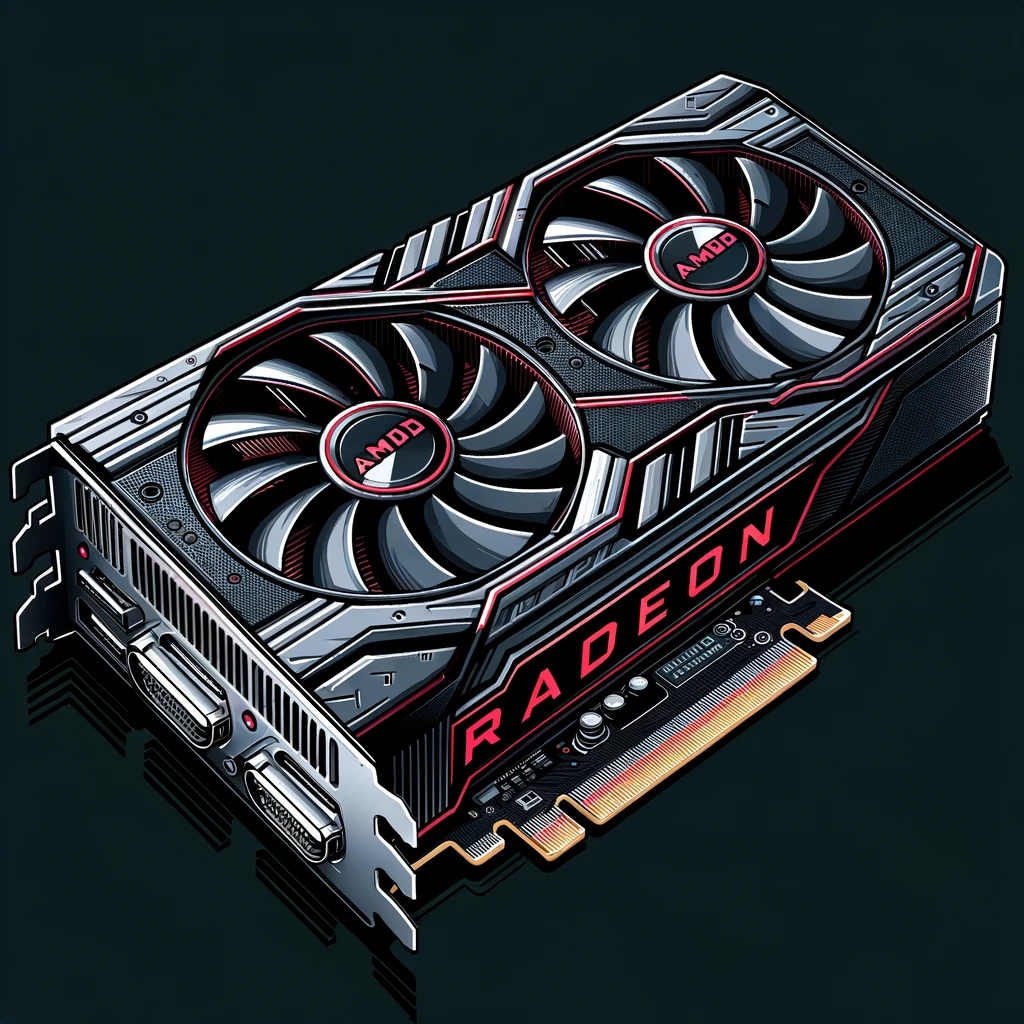
Prologue: AMD’s Journey
How AMD came to be
Advanced Micro Devices, Inc. commonly known as AMD, was founded on May 1, 1969, in Santa Clara, California, by Jerry Sanders and his colleagues. At the time, Jerry Sanders was the vice president of marketing at Fairchild Semiconductor, and he started AMD with the belief that “Better Products at Better Prices” was the way to go.
In the early days, AMD’s main products were computer components such as memory chips, and in 1970, the company released its first product, the Am9300 shift register. In 1972, the company went public and became a publicly traded company. Since its inception, AMD has placed a strong emphasis on quality, which has been the foundation of the company’s steady growth.
In 1975, AMD entered the microprocessor market and began competing with Intel, initially gaining traction with the release of the Am386 microprocessor, which was a reverse-engineered version of Intel’s chip. It was used in IBM PCs and helped AMD win a lengthy legal battle with Intel. During this time, AMD grew, strengthening its technical capabilities and market position.
Entrepreneurial spirit and early challenges
AMD’s corporate ethos can be summarized as “competitiveness through innovation”. This is a value that the company has emphasized since its inception, especially in the face of technological challenges and market competition. Since its inception, AMD has pursued both quality and price competitiveness in order to stay ahead of its rival Intel. This philosophy has helped AMD survive and grow in the marketplace.
In 1982, AMD began supplying second-source chips for IBM PCs through a contract with Intel. However, in 1986, the Intel contract ended, and AMD realized the need to develop its own technology. In 1991, AMD introduced its own Am386 microprocessor, which was a huge success and established AMD as a company with its own technology.
In the late 1990s, AMD introduced the Athlon processor to great popularity. The Athlon processors were the first x86-based desktop processors to achieve 1 GHz clock speeds, which contributed significantly to AMD’s image and revenue. This success was crucial to AMD’s emergence as a significant competitor in the CPU market.
From its earliest days, AMD established its market position through continuous technology innovation and quality improvement, which continues to this day. Looking ahead, AMD will continue to innovate based on its early belief in delivering “better products at better prices.”
In this article, we’ve explored AMD’s founding, early challenges, and how they’ve become a major player in the semiconductor industry. In the next section, we’ll dive deeper into AMD’s key products and technology innovations.
Product and technology innovation
CPU product lineup (Ryzen series, etc.)
AMD’s CPU product lineup is primarily organized around the Ryzen series. The Ryzen series was first released in 2017 and is used in a variety of applications including desktops, laptops, and servers.
- Ryzen: Ryzen processors boast high performance and multi-threaded processing power, and have become very popular in the consumer desktop and laptop market. They are divided into Ryzen 3, Ryzen 5, Ryzen 7, and Ryzen 9, with each model being categorized by performance and price. High-end models, such as the Ryzen 9 5950X, offer 16 cores and 32 threads for powerful multitasking performance.
- Threadripper: Ryzen Threadripper is for high-performance desktops, with some models offering up to 64 cores and 128 threads. They are primarily used for professional tasks, such as 3D rendering, video editing, scientific calculations, and more.
- Epyc: A processor lineup for servers, Epyc is targeted at large data centers and high-performance computing environments. Epyc processors offer high core counts and powerful performance, making them widely used in cloud services, data analytics, AI, and more.
GPU product lineup (Radeon series, etc.)

AMD’s GPU product lineup is offered under the Radeon brand and includes products primarily for gaming and graphics work.
- Radeon RX Series: GPUs for gaming, offering the latest graphics technology and high frame rates. For example, the Radeon RX 6000 series is based on the RDNA 2 architecture, which supports the latest graphics technologies like ray tracing.
- Radeon Pro: Professional graphics cards, optimized for advanced graphics tasks such as CAD, 3D modeling, and video editing. They offer high reliability and performance, and are often used in workstation environments.
- Instinct Series: GPUs for data centers and machine learning jobs. AMD Instinct combines high-performance compute power and energy efficiency, making it ideal for AI and data analytics tasks.
Key technology innovations and patents
AMD has played a significant role in the semiconductor industry through a variety of technological innovations and patents.
- x86-64 architecture: AMD popularized 64-bit computing in 2003 with the introduction of the x86-64 architecture, which has become the standard architecture used in most computers today.
- Zen Architecture: Introduced in 2017, the Zen architecture significantly improved AMD’s CPU performance. It features a modular chiplet design that delivers high performance and power efficiency. It has continued to improve with Zen 2, Zen 3, and most recently Zen 4.
- Infinity Fabric: AMD’s Infinity Fabric technology enables high-speed communication between the CPU and GPU, maximizing system performance. This is especially important in multi-chip module (MCM) configurations.
Market share and competitors
AMD has seen significant growth in market share in recent years. As of Q1 2024, AMD had a 20.6% unit share of the x86 CPU market, up 3.6% from the same period a year earlier. AMD’s EPYC processors have been particularly successful in the server market, with a 23.1% unit share, up 5.5% year-over-year.
Major competitors (Intel, NVIDIA, etc.)
AMD’s main competitors are Intel and NVIDIA. Intel still dominates the server market with a 76.4% share, but AMD continues to expand its share. Intel faces stiff competition from AMD, especially in the higher-end server CPU market. The competition with NVIDIA is primarily in the GPU market, where AMD is increasingly competitive with its Radeon series.
Competitive strategy in the marketplace
AMD is expanding its market share with products that are more competitive in price and performance. In particular, Ryzen processors and EPYC server processors have been positively received by the market for their high performance and efficiency. AMD is also introducing innovative technologies, such as 3D V-Cache technology, to increase its competitiveness. This is helping AMD increase its share in the premium product market as well.
These strategies have enabled AMD to strengthen its global footprint and continue to grow in the face of competition from Intel and NVIDIA.
Growth strategy and vision
Recent major acquisitions and mergers
AMD recently expanded its artificial intelligence (AI) software capabilities with the acquisition of Nod.ai. Nod.ai is a team of AI software experts who have made significant contributions to open-source AI compiler software. This acquisition strengthens AMD’s AI group and focuses on optimizing various AI solutions to increase performance. We also expanded our data center product portfolio with the acquisitions of Pensando and Xilinx, and strengthened our high-performance computing and networking solutions.
Future growth strategy
AMD’s future growth strategy is focused on key areas such as AI, data center, and high-performance computing (HPC). We’re focused on delivering next-generation processors based on the Zen 5 architecture to drive performance and efficiency, enhancing our competitive position in the data center and high-performance desktop markets with 3D V-Cache technology, and delivering better solutions to our customers through continued R&D investments and innovation.
Corporate vision and goals
AMD’s vision is to be the world leader in high-performance computing and graphics solutions. To achieve this, we are strengthening our position in the marketplace through customer-centric innovation, strengthening partnerships, and sustainable management. AMD aims to contribute to future technology advancements and capitalize on new growth opportunities, such as AI and HPC, to create a better world.
With this strategy and vision, AMD continues to grow in the global marketplace and strengthen its competitive position through technology innovation and quality improvement.
Future outlook and conclusions
The future of MD
AMD’s future is bright, with multiple growth drivers. We expect continued growth based on our strong positions in AI, data center, high-performance computing (HPC), and more. We expect continued acquisitions and innovative product launches, such as our recent acquisition of Nod.ai, which bolsters our AI capabilities. In addition, AMD’s Zen architecture continues to evolve, with a focus on increasing performance and efficiency.
Summary and conclusions
AMD is experiencing strong growth in the CPU and GPU markets and is preparing for the future through technology innovation and strategic acquisitions. We are gaining market share in the face of intense competition from key competitors Intel and NVIDIA, and we are strengthening our leadership in AI and the data center. These efforts will help position AMD as a global leader in high-performance computing solutions.
AMD’s journey has been one of innovation and challenge, and we are poised to continue in this vein and achieve sustainable growth. As we move forward with our corporate vision and goals, AMD’s future is very promising.
Source
- Advanced Micro Devices, Inc. (britannica)
- A look back at the history of AMD (Club 386)
- AMD makes further CPU market share gains with signs pointing to a recovery in the overall PC market (PC gamer)
- AMD takes market share from Intel in server, desktop, and notebooks – new Mercury Research data shows Q4 2023 data (Tom’s hardware)
- AMD Completes Acquisition of Nod.ai (AMD)
